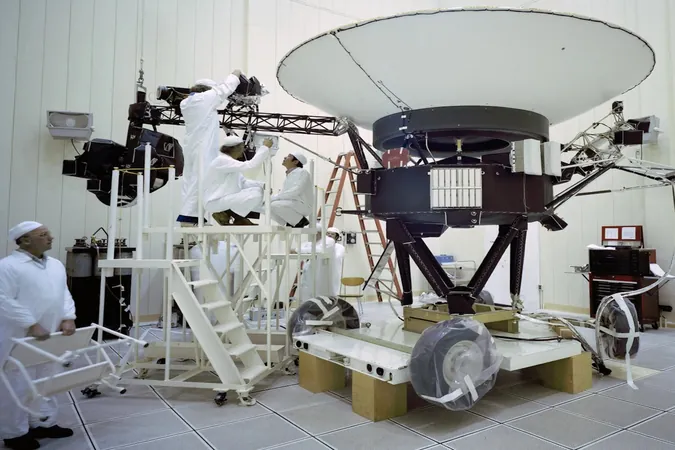
NASA Makes Heartbreaking Decision to Shut Down Voyager 2 Instrument Amid Power Loss
2024-10-02
Author: Ying
NASA Makes Heartbreaking Decision to Shut Down Voyager 2 Instrument Amid Power Loss
In a poignant reminder of the passage of time and the constraints of technology, NASA has announced the shutdown of one of the critical instruments aboard its Voyager 2 spacecraft due to dwindling power. As this remarkable probe continues its journey through the cosmic void, the challenges of space exploration grow more evident.
Launched in 1977, Voyager 2 has traveled an astonishing 12.8 billion miles (20.5 billion kilometers) from Earth, exploring the far reaches of our solar system. This iconic mission has enabled groundbreaking discoveries, with the spacecraft making historic flybys of Jupiter, Saturn, Uranus, and Neptune. However, after decades of exploring, the toll on Voyager 2 is becoming apparent as its power source wanes.
On September 26, NASA mission engineers took the critical step of turning off the probe's plasma science instrument to conserve electrical energy. This instrument was vital for measuring plasma—ions and electrons—in interstellar space, helping scientists understand the solar wind and the environments surrounding planets. Now, with this shutdown, Voyager 2 will rely on its remaining four instruments, which continue to study various interstellar phenomena.
The decision to deactivate the plasma instrument was not made lightly. The twin Voyager probes, Voyager 1 and Voyager 2, rely on decaying plutonium generators that lose approximately 4 watts of power each year. After its successful mission within the solar system, which concluded with a voyage to Neptune in 1989, the engineering team has had to strategically turn off non-essential instruments over the years to extend the life of the spacecraft.
Interestingly, NASA scientists recently executed an innovative workaround that allowed Voyager 2 to utilize a small amount of backup power initially designated for safety protocols. This temporary solution, however, only postponed the inevitable need to shut down the plasma instrument.
The communication relay for this operation was lengthy, taking a full 38 hours—19 hours for the signal to reach the spacecraft and another 19 for confirmation of the deactivation. Despite this setback, NASA confirmed that Voyager 2 is still operating normally after the switch-off.
The plasma instrument featured intricate measurement designs with four cups, three of which engaged with solar wind, while the fourth focused on the plasma found in planetary magnetic fields and the vastness of interstellar space. It played a crucial role in confirming Voyager 2's exit from the heliosphere—the protective bubble created by the solar wind—allowing scientists to grasp the transition into true interstellar space.
Despite the loss of this important instrument, NASA estimates that Voyager 2 has enough power to keep functioning with at least one scientific instrument into the 2030s. The agency anticipates a gradual process of deactivation for the remaining instruments, hinting at the ultimate decline of this once-vibrant spacecraft.
As we continue to unfold the mysteries of the universe, the story of Voyager 2 remains a testament to human ingenuity, perseverance, and the relentless pursuit of knowledge. With each instrument that shuts down, we draw closer to a bittersweet end to a journey that has enriched our understanding of the cosmos beyond comprehension. Will humans ever reach such distances again? Only time will tell.


 Brasil (PT)
Brasil (PT)
 Canada (EN)
Canada (EN)
 Chile (ES)
Chile (ES)
 España (ES)
España (ES)
 France (FR)
France (FR)
 Hong Kong (EN)
Hong Kong (EN)
 Italia (IT)
Italia (IT)
 日本 (JA)
日本 (JA)
 Magyarország (HU)
Magyarország (HU)
 Norge (NO)
Norge (NO)
 Polska (PL)
Polska (PL)
 Schweiz (DE)
Schweiz (DE)
 Singapore (EN)
Singapore (EN)
 Sverige (SV)
Sverige (SV)
 Suomi (FI)
Suomi (FI)
 Türkiye (TR)
Türkiye (TR)